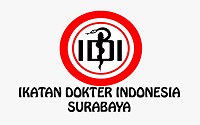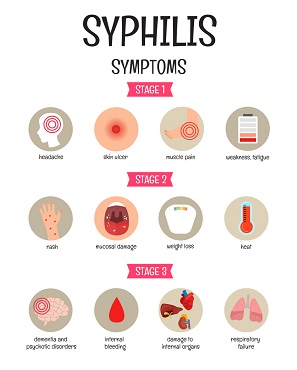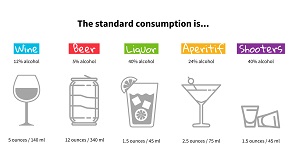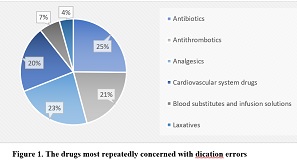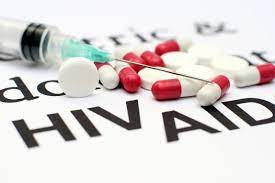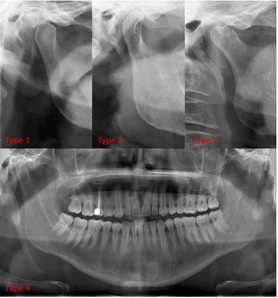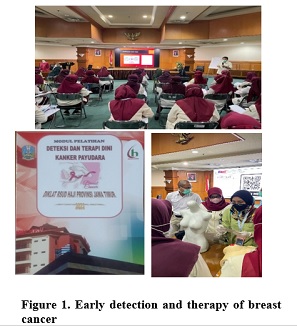The Impact of Personal Hygiene Practices on the Incidence of Vaginal Discharge Among Adolescent Girls at Junior High School 29 Surabaya, 2023
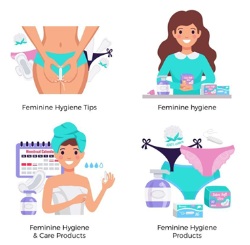
The teenage years are a period of rapid growth and development. Adolescence is a period of rapid growth and development, especially in the reproductive system. Many teenagers do not receive adequate knowledge about how to care for their reproductive organs because it is still considered taboo, so some teenagers may experience problems with their reproductive organs. A common issue faced by teenagers is leucorrhea. Leucorrhea is one of the problems that can arise due to the lack of knowledge among teenagers about maintaining reproductive health. Leucorrhea can develop into a serious problem if the care of the reproductive organs is not appropriately managed. This observational analytical study utilizes quantitative methods with a cross-sectional research design. The population was female Junior High School (SMPN) students 29 Surabaya. The sample was selected using purposive sampling. Data analysis employed univariate and bivariate methods, with the Chi-Square Test used for statistical analysis. The findings indicated that 78.8% of respondents experienced physiological vaginal discharge, 17.7% had pathological vaginal discharge, and 3.5% reported never having vaginal discharge. Statistical analysis revealed a significant relationship between personal hygiene and the incidence of vaginal discharge, with a p-value of 0.001. The research demonstrated a clear relationship between personal hygiene and the incidence of vaginal discharge. Educating adolescents about reproductive health and proper care for reproductive organs can help reduce the incidence of vaginal discharge among girls.
INTRODUCTION
Adolescence is a dynamic developmental phase in an individual's life. It is a transition period from childhood to adulthood, characterized by rapid physical, mental, and emotional development11. The World Health Organization (WHO) defines adolescence as 12 to 24, while the Indonesian Ministry of Health specifies this range as 10 to 1922.
Significant changes occur during adolescence, particularly in the reproductive system3. Many teenagers may lack knowledge about maintaining good reproductive health, which is crucial for overall well-being in both women and men. Additionally, reproductive health can impact the health of infants, children, adolescents, and individuals beyond their reproductive years44.
Research conducted by the World Health Organization (WHO) on reproductive health indicates that 75% of women will experience vaginal discharge at least once in their lifetime, with 45% encountering this issue two or more times55.
In Indonesia, data from 2012 shows that 43.3 million teenagers aged 15-24 engage in unhealthy behaviors. Among the 23 million young women in this age group, 83% have had sexual intercourse, thereby increasing their chances of experiencing premenstrual syndrome (PMS), which is one of the causes of vaginal discharge66. Research highlights that vaginal discharge is the second most common reproductive health issue after menstrual disorders that occur during adolescence77.
Reproductive health is a state of complete physical, mental, and social well-being, not just the absence of disease or disability. It encompasses freedom in all matters related to the reproductive system, function, and processes88. Maintaining reproductive organ health starts with personal hygiene, including vaginal hygiene, which aims to keep the vagina clean, normal, healthy, and free from the possibility of disease99.
Personal hygiene, derived from the Greek words for "individual" (personal) and "healthy" (hygiene), is crucial for overall health44. Poor personal hygiene can lead to infections, particularly in the reproductive organs1010.
One common symptom of such diseases is vaginal discharge, which refers to fluid that exits the vagina (other than blood) and may be unusual in odor or consistency, often accompanied by localized itching1111. Furthermore, leucorrhea and inadequate personal hygiene can contribute to mental issues, including tension and anxiety, as well as discomfort from odor and itching that interferes with day-to-day activities1212.
A healthy vaginal discharge serves as a lubricant and protection. The body may effectively resist unwanted foreign items with the help of vaginal mucus1313. Nevertheless, some leucorrhea symptoms can be morbid because they produce moisture in the vaginal area, which causes itching and irritation that interferes with all activities, particularly sexual ones, and makes them less comfortable1414.
Research conducted by Ratna Indriyani, Yuli Indriyawati, and Iva Gamar Dian Pratiwi in 2012 regarding the relationship between personal hygiene and vaginal discharge among female students at Ma Al-Hikmah Aeng Deke Bluto. This research used a cross-sectional approach with a sample size of 63 respondents. After analyzing the data using the contingency coefficient, it was found that there was a relationship between personal hygiene and the incidence of vaginal discharge1515.
Preliminary research at Junior High School (SMP) Negeri 29 Surabaya involved interviews with 10 female students. The findings showed that 8 of them had experienced vaginal discharge. Of these, seven students reported experiencing vaginal discharge both before and after menstruation and described the discharge as usual—neither excessive nor itchy. In contrast, one student reported experiencing smelly vaginal discharge accompanied by itching, while two students stated they had never experienced vaginal discharge.
SMP Negeri 29 Surabaya was chosen as the research site because adolescent girls are particularly vulnerable to experiencing vaginal discharge, especially at the junior high school level, which coincides with early adolescence. Significant changes mark this period as individuals transition from childhood to adulthood. During adolescence, there is an acceleration in the development of reproductive organs, commonly referred to as puberty1616. This stage includes the onset of menarche or menstruation, which can leave young girls unsure of how to care for their reproductive health properly. Consequently, they are more susceptible to experiencing vaginal discharge.
Based on these considerations, the author intends to conduct research in 2023 on the relationship between personal hygiene and the incidence of vaginal discharge among adolescent girls at SMP Negeri 29 Surabaya.
MATERIALS AND METHODS
The research was conducted using an analytical survey, specifically observational analytics. It employs a cross-sectional research design to examine the relationship between personal hygiene and the incidence of vaginal discharge. In this design, both the independent variable (risk factor) and dependent variable (effect) are measured simultaneously at a single point in time to explore their relationship1717.
The population targeted in this study consists of all female students at SMP Negeri 29 Surabaya during the 2023/2024 academic year. The sample size was determined using the Slovin formula, which indicated that a minimum of 85 respondents was required for the study.
Sampling was conducted according to the researcher's specific inclusion and exclusion criteria1818. The inclusion criteria are as follows: the respondent must be a female student at SMP Negeri 29 Surabaya, aged between 11 and 15, must reside with their family, and must have experienced menstruation. Exclusion criteria included respondents who were undergoing special medical treatment, those who had engaged in excessive douching,
Rosyida, D.A.C., 2019. Buku ajar kesehatan reproduksi remaja dan wanita [Educational Book on Adolescent and Female Reproductive Health]. Pt. Pustaka Baru, Yogyakarta.
Ilmiawati, H., Kuntoro, K., 2017. 'Pengetahuan personal hygiene remaja putri pada kasus keputihan' [Knowledge of Personal Hygiene among Adolescent Girls in Cases of Vaginal Discharge]. Jurnal Biomedik Dan kependudukan. Avaliable at: DOI : 10.20473/jbk.v5i1.2016.43-51
Djama, N.T., 2017. ‘Kesehatan reproduksi remaja’ [Adolescent Reproductive Health]. Jurnal Kesehatan Poltekkes ternate. Avaliable at: https://ejournal.poltekkesternate.ac.id/ojs/index.php/juke/article/view/39
Noviana, N., 2021. Konsep HIV / AIDS Seksualitas dan Kesehatan Reproduksi. [Concepts of HIV/AIDS, Sexuality, and Reproductive Health]. Cv. Trans Info Media, Jakarta.
Yuliasari D., Sari, F.E., Astriani, R., 2015. ‘Hubungan personal hygiene dengan keputihan pada remaja putri di risma miftahul huda lampung selatan tahun 2015’ [The Relationship Between Personal Hygiene and Vaginal Discharge Among Adolescent Girls at Risma Miftahul Huda, South Lampung, in 2015]. Jurnal Kebidanan. Avaliable at: https://ejurnalmalahayati.ac.id/index.php/kebidanan/article/view/557
Kusmiran, 2013. Kesehatan reproduksi remaja dan wanita [Reproductive Health of Adolescents and Women]. Salemba, Jakarta.
Eduwan, J., 2022. ‘Gambaran pengetahuan tentang keputihan pada remaja putri’ [Description of Knowledge Regarding Vaginal Discharge among Female Adolescents in Bengkulu city]. Jurnal Vokasi Keperawatan. DOI : 10.33369/Jvk.V5i1.22449
Permatasari, D., Suprayitno, E., 2021. ‘Pendidikan kesehatan reproduksi pada remaja’[Reproductive health Education for Adolescents]. Jurnal empathy. DOI : 10.37341/Jurnalempathy.V0i0.46
Andriana, 2019. ‘Hubungan perilaku personal hygiene dengan kejadian keputihan pada santri putri pondok pesantren an - nawawi purworejo tahun 2019’ [Correlation of Personal Hygiene Behavior and the Incidence of Vaginal Discharge in Female Student An-Nawawi Purworejo Islamic Boarding School in 2019]. Politeknik Kesehatan. Kementrian Kesehatan. Yogyakarta. Avalible at: http://eprints.poltekkesjogja.ac.id/id/eprint/2314
Khusen, 2014. Rahasia kesehatan wanita [Womens’s Health Secrets]. Fakultas Kedokteran Universitas Indonesia, Jakarta.
Pangestuning Tyas, T., Putri, H., Perbawati, D. 2022. ‘Hubungan personal hygiene genetalia terhadap kejadian keputihan’ [ The Correlation of Genital Hygiene to Leuchorroea]. J. Ilmu Kebidanan. DOI : 10.35316/oksitosin.v9i2.1648
Azizah, U., 2020. ‘Hubungan personal hygiene dengan keputihan pada mahasiswi fakultas kedokteran universitas sriwijaya angkatan 2017’ [Association of Personal Hygene with Vaginal Discharge in Female Students at the Faculty of Medicine Sriwijaya University Class of 2017]. Universitas Sriwijaya. Avalible at: http://repository.unsri.ac.id/id/eprint/39603
Pudiastuti, R.D., 2012. Tiga fase penting pada wanita [Three Key Stages in a Womans’s Life]. Pt Elex Media, Jakarta.
Gampu, H. T. H., Onibala, F., & Kundre, R. (2018). ‘Hubungan Sikap dan Perilaku Remaja Putri dengan Pencegahan Keputihan di SMA N 3 Tahuna Barat Kabupaten Kepulauan Sangihe’ [The Correlation Between Adolescent Girls' Attitudes and Behaviors and the Prevention of Vaginal Discharge at SMA N 3 Tahuna Barat, Sangihe Islands Regency]. Jurnal Keperawatan. Avalible at: https://ejournal.unsrat.ac.id/v3/index.php/jkp/article/view/19488
Indriyani, R., 2012. ‘Hubungan personal hygiene dengan kejadian keputihan pada siswi ma al-hikmah aeng deke bluto’ [The Correlation Between Personal Hygiene and the Occurrence of Vaginal Discharge Among Female Students at MA Al-Hikmah Aeng Deke Bluto]. Jurnal Kesehatan Wiraraja. Avalible at: https://www.ejournalwiraraja.com/index.php/FIK/article/view/44
Tristanti, I., 2016. ‘Hubungan perilaku personal hygiene genital dengan kejadian keputihan pada siswi madrasah aliyah muhammadiyah kudus’ [The Correlation Between Genital Personal Hygiene Behavior and the Occurrence of Vaginal Discharge Among Female Students at Madrasah Aliyah Muhammadiyah Kudus]. Stikes Muhammadiyah Kudus. Avalible at: https://ejr.umku.ac.id/index.php/jikk/article/view/120
Sugiyono, 2018. Metodologi penelitian kuantitatif, kualitatif dan r&d [Quantitative, Qualitative, and Research and Development (R&D) Methodology]. Alfabeta, Bandung.
Badriah, D.L., 2019. Metodologi penelitian ilmu-ilmu kesehatan [Research Methodology in Health Sciences]. Bandung
Amalia Putri, A., Amelia K, P., Cholifah, S., 2021. ‘Hubungan perilaku personal hygiene dengan kejadian keputihan pada remaja putri’ [The Relationship between Personal Hygiene Behavior with Vaginal Discharge in Young Women]. Midwiferia Jurnal Kebidanan. DOI: 10.21070/midwiferia.v7i1.954
Notoatmodjo, S., 2014. Metodologi penelitian kesehatan [Research Methodology in Health]. Pt Rineka Cipta.
Notoadmodjo S. 2018. Metodologi penelitian kesehatan [Health Research Methodology]. Rineka Cipta.
Aulia, 2012. Serangan penyakit - penyakit khas wanita paling sering terjadi [The Most Common Women's Health Conditions and Diseases]. Buku biru, Jogjakarta.
Nurrohmatun, Juliani S. 2021. ‘Health Education Tentang Vulva Hygiene Mempengaruhi Pengetahuan Dan Sikap Remaja Putri Dalam Pencegahan Keputihan’ [Health Education on Vulva Hygiene Affects Knowledge and Attitudes of Adolescent Girls in the Prevention of Vaginal Discharge]. Jurnal kebidanan. Avalible at: https://ejurnalmalahayati.ac.id/index.php/MJ/article/download/4429/pdf
Wahyuni, S. 2018. ‘Hubungan personal hygiene dengan kejadian keputihan pada smp pius kutoarjo tahun 2015’ [The Relationship Between Personal Hygiene and Vaginal Discharge Incidence at SMP Pius Kutoarjo in 2015]. Jurnal Komunikasi Kesehatan. Avalible at: https://ejurnal.ibisa.ac.id/index.php/jkk/article/download/121/116
Jayanti, S., & Sari, T. 2022. ‘Hubungan pengetahuan, sikap, dan perilaku personal tentang kesehatan reproduksi dengan kejadian keputihan pada siswi sma negeri 3 merauke [The Relationship Between Knowledge, Attitudes, and Personal Behavior on Reproductive Health and Vaginal Discharge Incidence Among Female Students of SMA Negeri 3 Merauke].’ Journal Of Syntax Literate. Available at: https://jurnal.syntaxliterate.co.id/index.php/syntax-literate/article/view/9588
Copyright (c) 2025 Rani Siti Nur Aini

This work is licensed under a Creative Commons Attribution-ShareAlike 4.0 International License.
- The journal allows the author to hold the copyright of the article without restrictions.
- The journal allows the author(s) to retain publishing rights without restrictions.
- The legal formal aspect of journal publication accessibility refers to Creative Commons Attribution Share-Alike (CC BY-SA).
- The Creative Commons Attribution Share-Alike (CC BY-SA) license allows re-distribution and re-use of a licensed work on the conditions that the creator is appropriately credited and that any derivative work is made available under "the same, similar or a compatible license”. Other than the conditions mentioned above, the editorial board is not responsible for copyright violation.






